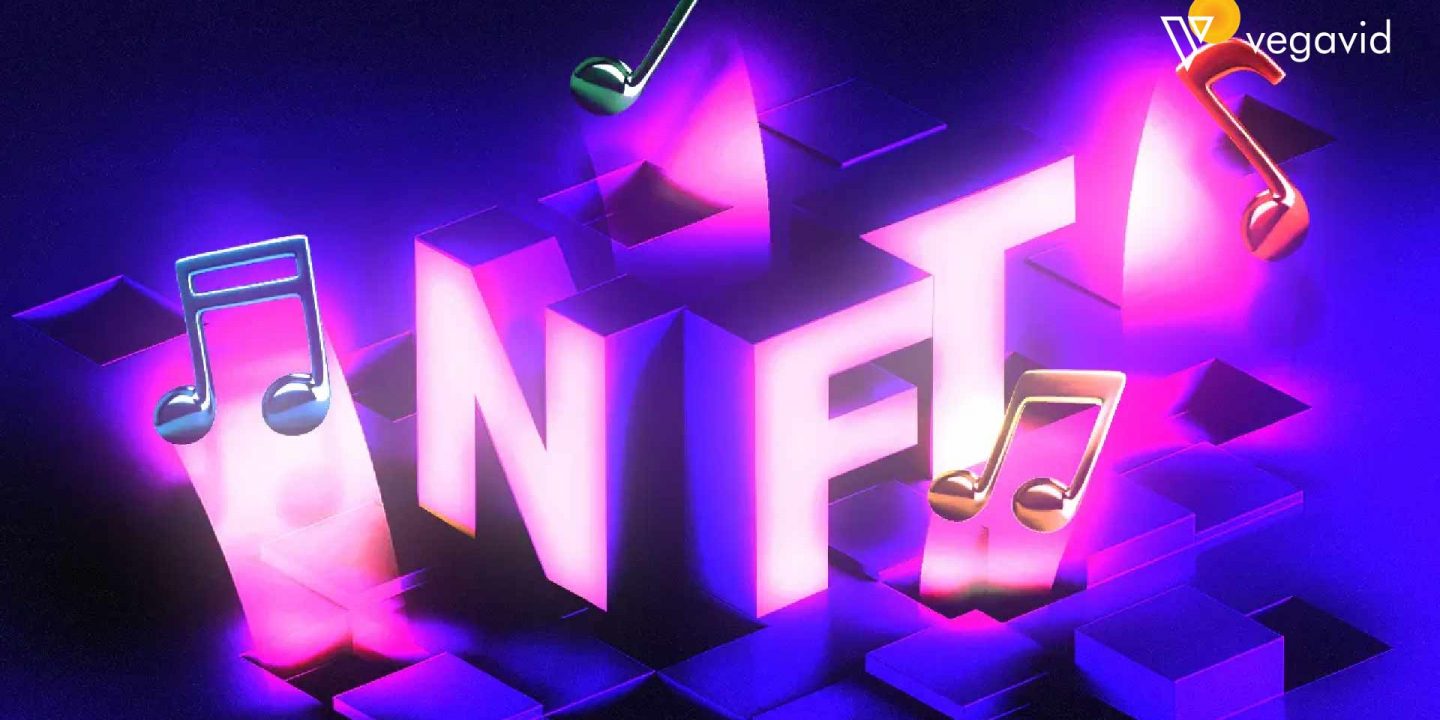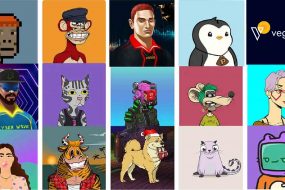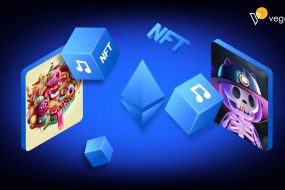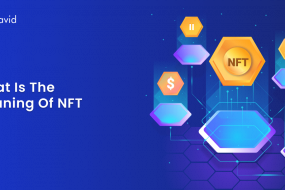
Music non-fungible tokens or NFTs represent a radical new concept that is poised to reshape the music industry. NFTs allow music artists, labels, and platforms to tokenize scarce digital assets like songs, album rights, concert tickets, and merchandise. These tokenized music assets can be bought, sold, traded, and invested in, revolutionizing how music is created, distributed, and monetized.
Music NFTs are providing new revenue streams for artists, enhancing fan engagement, and disrupting traditional industry practices. At the same time, they also introduce risks and open-ended challenges that must be addressed. This blog explores the potential impacts of music NFTs, how they work, the opportunities they present, and the obstacles they could present if not managed properly. Music NFTs have the power to transform music ownership, access, and economics in profound ways.
What are music NFTs and how do they work?
Music NFTs stand for non-fungible tokens related to music. They are unique digital assets with blockchain-based ownership rights and verifiable scarcity. It can represent scarce assets like songs, albums, concert tickets, merchandise, or other music-related items. They are issued on blockchain platforms that support NFTs, typically using Ethereum’s ERC-721 standard. NFTs contain metadata that describes the music asset, any ownership rights, quantities, and other key attributes.
This provides transparent information to anyone who owns, buys, or sells the NFT. It can be bought, sold, traded, collected, invested in, or used for other benefits like access, subscribership, or fan engagement based on their features and roadmaps. Owners maintain ownership and any associated rights, revenue shares, or other benefits even after purchasing from another party.
Music NFTs often provide revenue sharing, fan engagement benefits, or other ongoing value propositions beyond the initial sale. They aim to build long-term relationships with supporter communities and foster continued engagement with music and artists.
Revolutionizing Music Ownership
Music NFTs are revolutionizing music ownership in several important ways:
- Verifiable scarcity: The verifiable scarcity of NFTs prevents counterfeits and ensures a limited supply of digital music assets like songs, albums, shows, etc. This scarcity enhances value over time-based on supply and demand. Valuations become more stable and investment-friendly.
- Fractional ownership: NFTs support fractional or partial ownership of music assets. Multiple parties can own fractional shares of songs, albums, tours, brands, and more. This allows more widespread access to ownership and economics. Fans can become co-owners of their favorite music.
- Interoperability: NFTs can be bought, sold, traded, and used across different platforms and Music NFT marketplaces. Owners maintain control of their NFTs no matter where they are or how they might be used. Liquid secondary markets for music NFTs are emerging. Mobility and options increase for both buyers and sellers.
- Data ownership: NFTs represent digital ownership of scarce music assets. This includes ownership rights over any revenue, data, royalties, or other economic benefits derived from the NFT. Artists and labels can own a larger share of their music’s economics. Data rights become more transparent and negotiable.
Providing New Revenue Streams for Artists
Music NFTs provide several new revenue streams for artists and labels:
- Scarce digital asset sales: Artists and labels can sell unique NFTs representing scarce digital assets like songs, albums, concert tickets, merchandise, and more. These NFT sales provide direct revenue that can be a significant source of income, especially for niche or independent artists.
- Licensing fees: The verifiable scarcity and programmability of NFTs enable new licensing models. Artists can license NFTs for use cases like sync placements, ads, brand partnerships, movie/game soundtracks, product promotions, and more. Licensing fees would be paid to NFT holders according to the terms of the NFT.
- Subscription models: NFTs could provide access to paid subscriber communities, live streams, fan clubs, newsletters, exclusive content, and other subscription benefits. Monthly or annual subscription fees would be paid by NFT owners and shared with artists and labels according to the NFT’s economics.
- Event revenue: NFTs could provide access to private live shows, meet & greets, acoustic sessions, Q&A’s, or other exclusive events. Tickets to these events would be limited, and scarce NFTs sold at a premium. Event revenue would accrue to artists, venues, and any other parties entitled to a share based on the NFT.
- Merchandise: Apparel, collectibles, equipment, and other music merchandise could be sold as NFTs or bundled with NFTs. Merchandise sales provide direct revenue for artists and brands, of which a share would go to NFT holders based on the NFT’s terms.
- Data and analytics: The verifiable scarcity and programmability of NFTs enable more data-driven business models. Revenue could be earned from music data, analytics, insights, and reports sold to record labels, publishers, brands, advertisers, investors, and other industry parties interested in the metrics, demographics, and behaviors of an artist’s NFT communities.
Enhancing Fan Engagement
Music NFTs enhance fan engagement in several important ways:
- Fan ownership: By issuing NFTs representing ownership in music assets like songs, albums, concerts, or brands, artists can distribute ownership to their fans. Fans become co-owners and shareholders in the music they love. Their voices and interests are integrated into the economics and direction of the music. Loyalty is incentivized through participatory ownership.
- Programmable benefits: The programmability of NFTs allows benefits like voting rights, revenue shares, and subscriptions. Fans can enjoy customized benefits and utilities tailored to their favorite music and communities. Engagement is personalized.
- Secondary markets: Verifiable scarcity and interoperability enable NFTs to be traded on secondary markets. Fans who cannot or choose not to purchase certain NFTs at launch still have opportunities to acquire them on secondary markets and join communities. Additional liquidity raises awareness and engagement over time.
- Collectibles: Some music NFTs will become collectibles that fans acquire and trade based solely on a passion for the artists, scarcity, and potential future value. The competitive collecting of music NFTs fuels sustained interest in artists, brands, vinyl records, and other properties. Fandom transforms into an ongoing collection and investment.
- Loyalty programs: By issuing their own NFTs, artists can operate their own verifiably scarce and interoperable loyalty programs. Fans earn and spend NFT-based points, badges, and status on an open music NFT platform built for their favorite music brands. Deeper engagement and data insights result from these first-party relationships and ecosystems.
- Ticketing: NFTs representing verifiably scarce concert tickets backstage passes, or other ticketing configurations can reduce fraud and scalping. It will help in providing analytics on buying behaviors and secondary market activity. Optimal pricing, quantities, and launch strategies improve based on real-time insights from the NFT ticketing process.
Disrupting Traditional Music Industry Practices
Music NFTs have the potential to disrupt several traditional music industry practices. Here are few reasons why MUSIC NFT Projects are disrupting traditional practices in the music industry:
- Limited distribution: NFTs provide a way to distribute ownership and economic benefits of music to fans in a scarce and verifiable manner. Rather than a limited number of streams, downloads, or physical units, the music can be shared as NFTs representing ownership stakes. This broadens the potential audience and long-term engagement.
- Lack of data: Music NFTs enable more data-driven business models. Verifiable scarcity ensures NFT ownership is tracked, providing insights into fan demographics, listening habits, purchasing behaviors, and more. This data can be used to enhance engagement, develop new products, gain sponsorships, and improve creative direction. data that currently goes uncaptured can now fuel optimization.
- Inefficient ticketing: NFTs represent a more efficient way to issue and manage tickets to concerts, live streams, virtual events, and other programming. Scalping and fraud are reduced through verifiable scarcity and interoperability. Pricing, quantities, and strategies can be adapted based on real-time insights from NFT ticket sales. Fans benefit from fairer access at optimal price points.
- Lack of revenue sharing: Music NFTs facilitate new ways of sharing revenue and economic benefits with artists, labels, and the fans that support them. Proceeds from NFT sales, licensing fees, subscriptions, events, and other streams can be distributed to parties according to the rules built into each NFT. A larger percentage of music’s total value can be captured and distributed to those who create and support it.
- Limited creative control: Artists have more control over the economics and distribution of their creative works using NFTs. Rather than ceding significant control and upside potential to labels and platforms, artists can maintain more ownership. They can determine how NFTs representing their music are used, sold, and shared. They can also implement creative commons licenses and always retain control of their works’ direction. Independence and flexibility increase.
- Inefficient merchandising: Apparel, collectibles, equipment, and other merchandise could be more efficiently sold as NFTs or bundled with NFTs. This provides data on the enthusiasts purchasing each product. It will allow for scarcity-based releases and promotions and enables new forms of merchandise that transcend the physical. Fans can acquire and trade rare digital merchandise NFTs, fueling a new secondary market around collections.
Potential Risks and Challenges
As with any new and powerful technology, music NFTs also introduce potential risks and challenges that must be addressed. Here are few common potential risk in the industry:
- Volatility: The value of NFTs depends on speculation and could be subject to volatility, bubbles, and crashes that reduce the value of music assets. Although scarcity supports value over time, volatile secondary markets could destabilize economics for artists, labels, and fans. Diversification and valuations that transcend NFTs alone can help mitigate volatility risk.
- Liquidity issues: Although interoperable, NFTs are still relatively illiquid assets. They could be difficult to sell, trade or convert back into traditional currency. This illiquidity poses risks, especially if music NFTs become a primary source of income for artists. Diversification across other revenue streams helps address this risk.
- Fraud and scams: Unregulated digital assets with speculative value, like many music NFTs, are targets for fraud, scams, Ponzi schemes, and other malicious behavior. Artists, labels, fans, and platforms must take steps to identify and prevent these harms to build trust in music NFTs and blockchain-based models. Due diligence is required to separate meaningful innovation from fraudulent schemes.
- Copyright issues: There is a possibility that music NFTs could enable new forms of copyright infringement by allowing unauthorized distribution, sale, or other use of creative works. Policies, tools, and governance models will be needed to ensure NFTs uphold existing copyright law and the rights of artists and others.
Conclusion
Music NFTs represent a revolutionary concept that stands to profoundly reshape the music industry. By enabling scarce, verifiable, and interoperable digital assets, music NFTs make it possible to fundamentally reimagine how music is created, distributed, and monetized. They enrich fan engagement through ownership, access, scarcity, and participation. They provide new tools for generating revenue and economic benefit from all aspects of music. They also disrupt inefficient or inequitable industry practices by distributing power and value more fairly between artists, labels, fans, and platforms.











